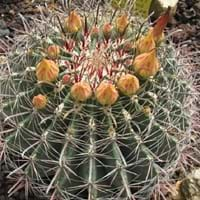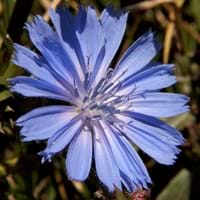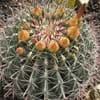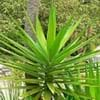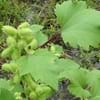Life Span
Perennial
Perennial
Type
Cactus or Succulent
Flowering Plants, Shrubs, Vegetable
Origin
Southwestern United States, Texas, Mexico
Mediterranean
Types
Not Available
Belgian Endive, Red Belgian Endive, Curly Endive (a.k.a. Frisee), Escarole, Radicchio (Chioggia) and Radicchio (Chioggia)
Number of Varieties
Not Available
Habitat
Desert, Upland
Grassland, Mediterranean region, Wild
USDA Hardiness Zone
9-12
3-9
Sunset Zone
12, 13, 14, 15, 16, 17, 18, 19, 20, 21, 22, 23, 24
A1, A2, A3, H1, H2, 1a, 1b, 2a, 2b, 3a, 3b, 4, 5, 6, 7, 8, 9, 10, 11, 12, 13, 14, 15, 16, 17, 18, 19, 20, 21, 22, 23, 24
Habit
Upright/Erect
Clump-Forming
Flower Color
Yellow, Red, Orange
Blue
Flower Color Modifier
Not Available
Not Applicable
Leaf Color in Spring
Green
Green
Leaf Color in Summer
Green
Green
Leaf Color in Fall
Green
Green
Leaf Color in Winter
Green
Green
Leaf Shape
Succulent
Oblong
Plant Season
Spring, Summer, Fall, Winter
Summer
Sunlight
Full Sun
Full Sun, Part sun
Type of Soil
Loam, Sand
Loamy, Sandy
The pH of Soil
Neutral
Acidic, Alkaline, Neutral
Soil Drainage
Well drained
Well drained
Bloom Time
Spring, Late Spring, Early Summer, Summer
Summer
Tolerances
Drought
Not Available
Where to Plant?
Ground
Ground
How to Plant?
Seedlings, Transplanting
Seedlings
Plant Maintenance
Medium
Medium
Watering Requirements
Do not water frequently
Keep the ground moist but not water-logged, Prefer drip-irrigation instead of Over-head watering, Requires regular watering, Requires watering in the growing season
In Summer
Lots of watering
Lots of watering
In Spring
Moderate
Moderate
In Winter
Average Water
Average Water
Soil pH
Neutral
Acidic, Alkaline, Neutral
Soil Type
Loam, Sand
Loamy, Sandy
Soil Drainage Capacity
Well drained
Well drained
Sun Exposure
Full Sun
Full Sun, Part sun
Pruning
Remove damaged leaves, Remove dead branches, Remove dead leaves
Cut or pinch the stems, Prune prior to new growth, Prune to stimulate growth, Remove dead or diseased plant parts, Remove deadheads
Fertilizers
All-Purpose Liquid Fertilizer
All-Purpose Liquid Fertilizer
Pests and Diseases
Red blotch
Aphids, Loopers, Root rot, Viruses, Worms
Plant Tolerance
Drought
Drought
Flower Petal Number
Single
Not Available
Foliage Texture
Bold
Medium
Foliage Sheen
Not Available
Matte
Attracts
Bees, Birds
Butterflies
Allergy
Not Available
Not Available
Aesthetic Uses
Showy Purposes
Not Used For Aesthetic Purpose
Beauty Benefits
Not Available
Not Available
Environmental Uses
Air purification
Air purification
Medicinal Uses
Not Available
Cancer, Digestive disorders, Inflammation, Liver problems, Stomach pain
Part of Plant Used
Fruits
Leaves, Root
Other Uses
Used As Food, Used as Ornamental plant
Used as an ingredient in coffee
Used As Indoor Plant
No
No
Used As Outdoor Plant
Yes
Yes
Garden Design
Container, Feature Plant, Houseplant, Mixed Border, Rock Garden, Wall, Wildflower
Not Available
Botanical Name
Ferocactus wislizeni
Cichorium intybus
Common Name
Arizona barrel cactus
Blue daisy, blue dandelion, blue sailors, blue weed, bunk, coffeeweed, cornflower, hendibeh, horseweed, ragged sailors, succory, wild bachelor's buttons, and wild endive
In Hindi
एरिजोना बैरल कैक्टस
कासनी
In German
Arizona barrel cactus
Chicoree
In French
Arizona barrel cactus
chicorée
In Spanish
Arizona barrel cactus
achicoria
In Greek
Αριζόνα βαρέλι κάκτου
ραδίκι
In Portuguese
Arizona barrel cactus
chicória
In Polish
Arizona barrel cactus
cykoria
In Latin
Arizona barrel cactus
pancratium
Phylum
Magnoliophyta
Magnoliophyta
Class
Magnoliopsida
Magnoliopsida
Order
Caryophyllales
Asterales
Family
Cactaceae
Asteraceae
Genus
Ferocactus
Cichorium
Clade
Angiosperms, Core eudicots, Eudicots
Angiosperms, Asterids, Eudicots
Subfamily
Cactoideae
Cichorioideae
Number of Species
Not Available
Season and Care of Arizona barrel cactus and Chicory
Season and care of Arizona barrel cactus and Chicory is important to know. While considering everything about Arizona barrel cactus and Chicory Care, growing season is an essential factor. Arizona barrel cactus season is Spring, Summer, Fall and Winter and Chicory season is Spring, Summer, Fall and Winter. The type of soil for Arizona barrel cactus is Loam, Sand and for Chicory is Loamy, Sandy while the PH of soil for Arizona barrel cactus is Neutral and for Chicory is Acidic, Alkaline, Neutral.
Arizona barrel cactus and Chicory Physical Information
Arizona barrel cactus and Chicory physical information is very important for comparison. Arizona barrel cactus height is 60.00 cm and width 30.00 cm whereas Chicory height is 3.00 cm and width 1.50 cm. The color specification of Arizona barrel cactus and Chicory are as follows:
Arizona barrel cactus flower color: Yellow, Red and Orange
Arizona barrel cactus leaf color: Green
Chicory flower color: Blue
- Chicory leaf color: Green
Care of Arizona barrel cactus and Chicory
Care of Arizona barrel cactus and Chicory include pruning, fertilizers, watering etc. Arizona barrel cactus pruning is done Remove damaged leaves, Remove dead branches and Remove dead leaves and Chicory pruning is done Cut or pinch the stems, Prune prior to new growth, Prune to stimulate growth, Remove dead or diseased plant parts and Remove deadheads. In summer Arizona barrel cactus needs Lots of watering and in winter, it needs Average Water. Whereas, in summer Chicory needs Lots of watering and in winter, it needs Average Water.
